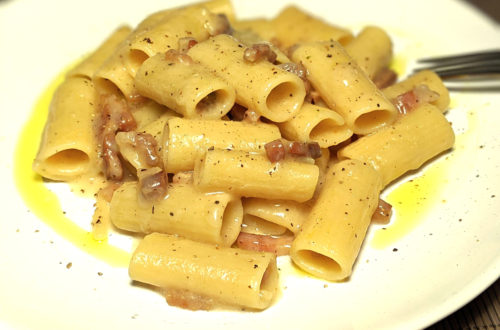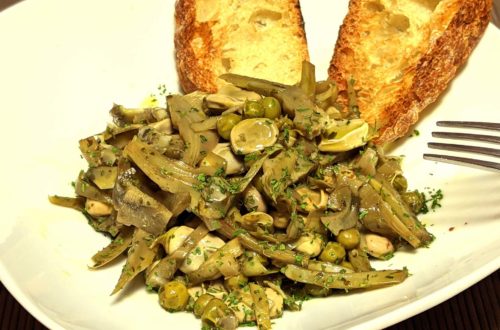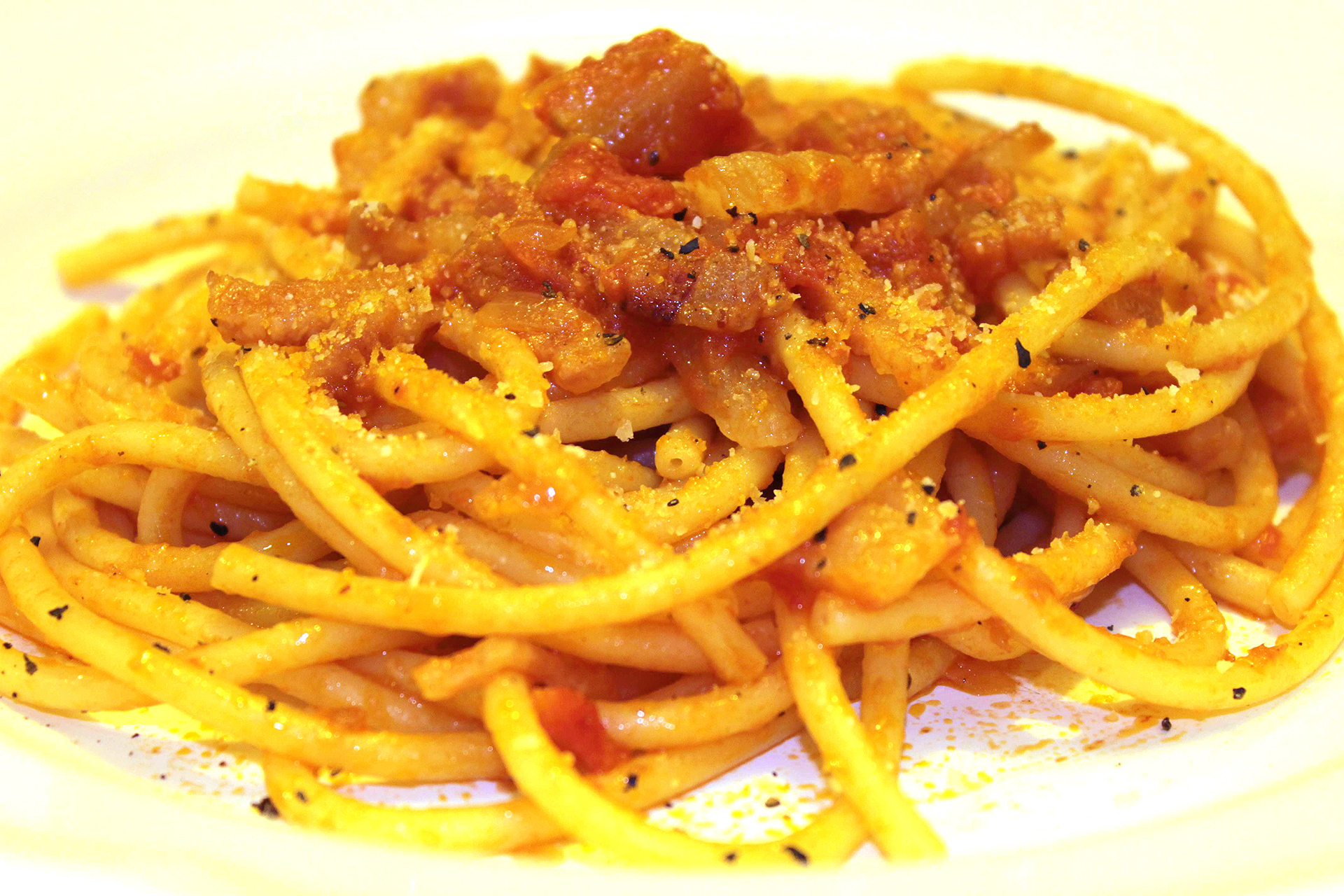
Another super classic: pasta a la Amatriciana. As I said when I posted the spaghetti alla Carbonara around here, it’s difficult to talk about some very popular and well-known recipes of the Italian cuisine. There are several versions and radical fans of one or the other not only defend the one they make at home as no more and no less than the most authentic, but any other variation is an insult to the name of that mythical recipe.
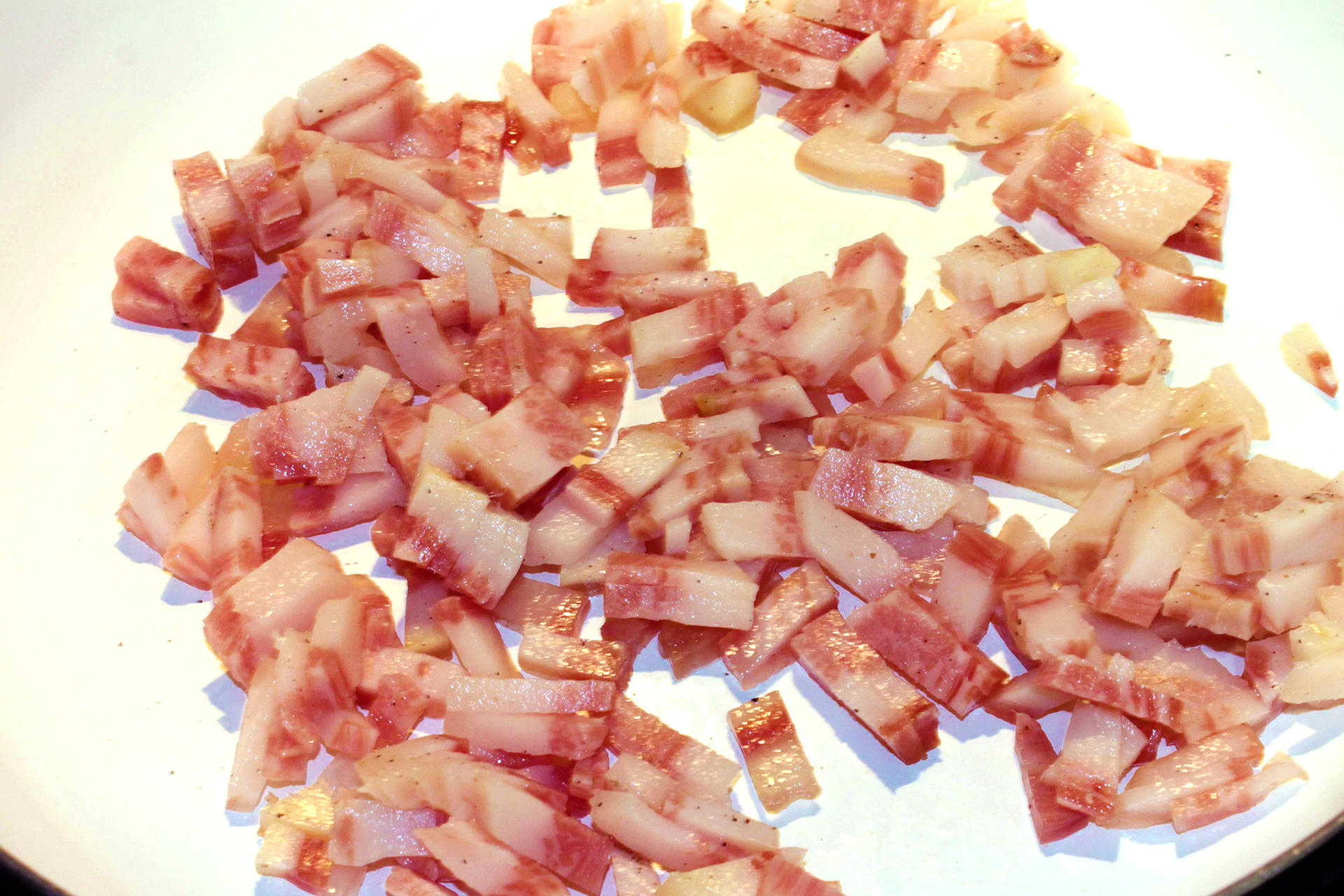
Pasta all’Amatriciana does not have as many points of conflict as carbonara, but, for example, I skip one of the steps around which more versions of Amatriciana seem to agree: Adding pecorino to the sauce or pasta when passing it over to the frying pan, for the final stir-fry. I have two very good reasons for doing so. Depending on the pecorino you find it may be more or less strong and by adding exactly the same amount you may get it right one day and completely unbalanced it the next. It should also be said that, since it is an already powerful fried food, thanks to the guanciale, it may be that for some people the pecorino tastes too tasty.
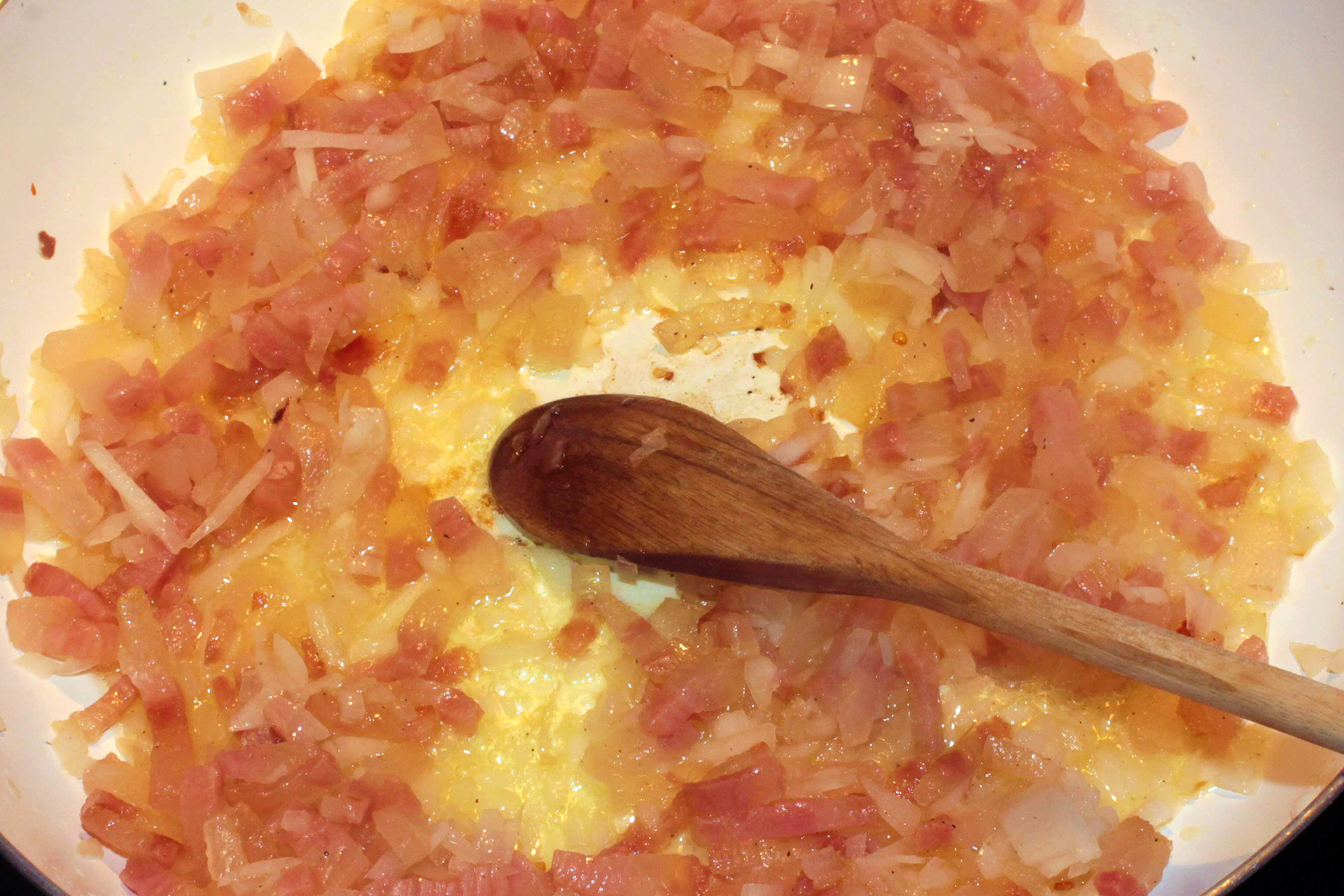
If you have guests it is not worth risking , therefore I put a very small amount of Pecorino on top, and I leave a bowl in the middle, so that everyone can add it according to their own taste. Obviously the pasta must be brought to the table hot, so that the pecorino added by each person can still bind with the sauce and the pasta.
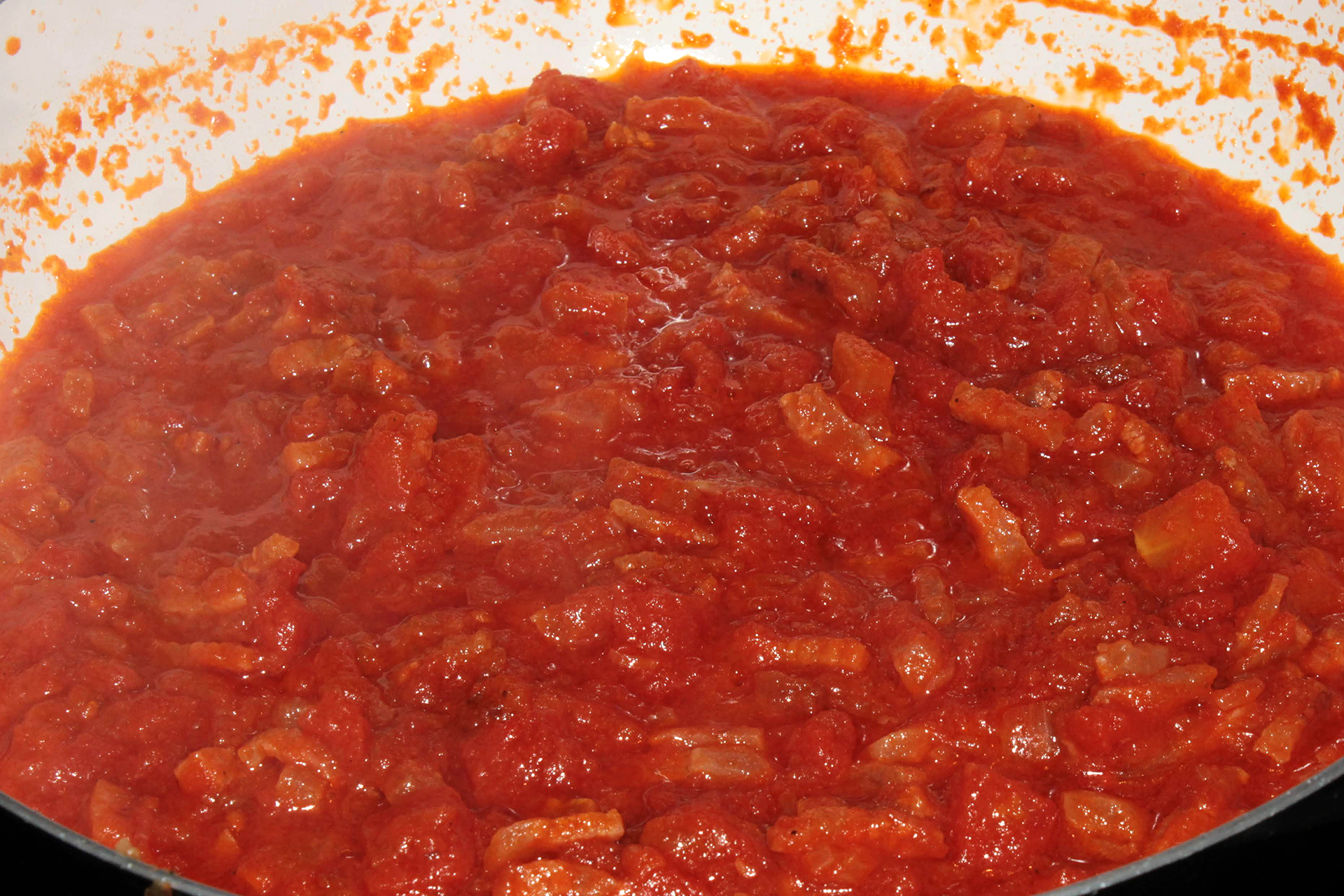
As you probably know, the Amatriciana pasta is said to come from Amatrice, a village in the Lazio region, and the star ingredient of the dish is the guanciale, the salted and cured cheek of the pig. I buy it in Italy, but I’ve seen it sold in several Italian shops. If you don’t find it, but only as a last resort, there are those who substitute it with bacon. You can make it with any kind of pasta, but if you want to go for “real”, I recommend bucatini (a kind of spaghetti with holes in it) or thick spaghetti.
Buon appetito!
The card
Amatriciana pasta (bucatini all'amatriciana)
Another super classic: pasta a la Amatriciana. There are several versions and radical fans of one or the other not only defend the one they make at home as no more and no less than the most authentic, but any other variation is an insult to the name of that mythical recipe.
Servings :2
Calories 500kcal
Print recipe
Ingredients
- 200 g Bucatini or spaghetti
- 150 g Tomato pulp diced.
- 50 g Guanciale
- ½ Small onion
- 1 Dried chilli pepper / cayenne pepper optional
- White wine
- 50 g Grated Pecorino or cured sheep's cheese
- Salt
- Black Pepper
Instructions
- Peel three or four well-ripened tomatoes, remove the seeds and the surrounding gelatinous part and cut the flesh into pieces.
- Fry the guanciale cut into strips in a medium-large frying pan, as it will also be used to sauté the pasta (it is fried over a medium-slow heat and without the need for oil, as there is more than enough to go around).
- When it is crunchy, add a splash of dry white wine and let it reduce, that the alcohol evaporates.
- Remove the guanciale and fry the onion cut into small squares and the cucumber, crumbling up the juice left in the paella.
- When the onion is golden brown, add the tomato pulp to the pan.
- After 7 minutes, taste the sofrito and add salt if necessary.
- When the sofrito is ready, add the bucatini al dente to the paella with a ladle of its cooking water.
- Sauté the pasta for 20 seconds, add the guanciale, and sauté the pasta for half a minute more.
- Serve the pasta with a little grated pecorino on top. Place a bowl of grated pecorino on the table, in case anyone wants to add more to the pasta.

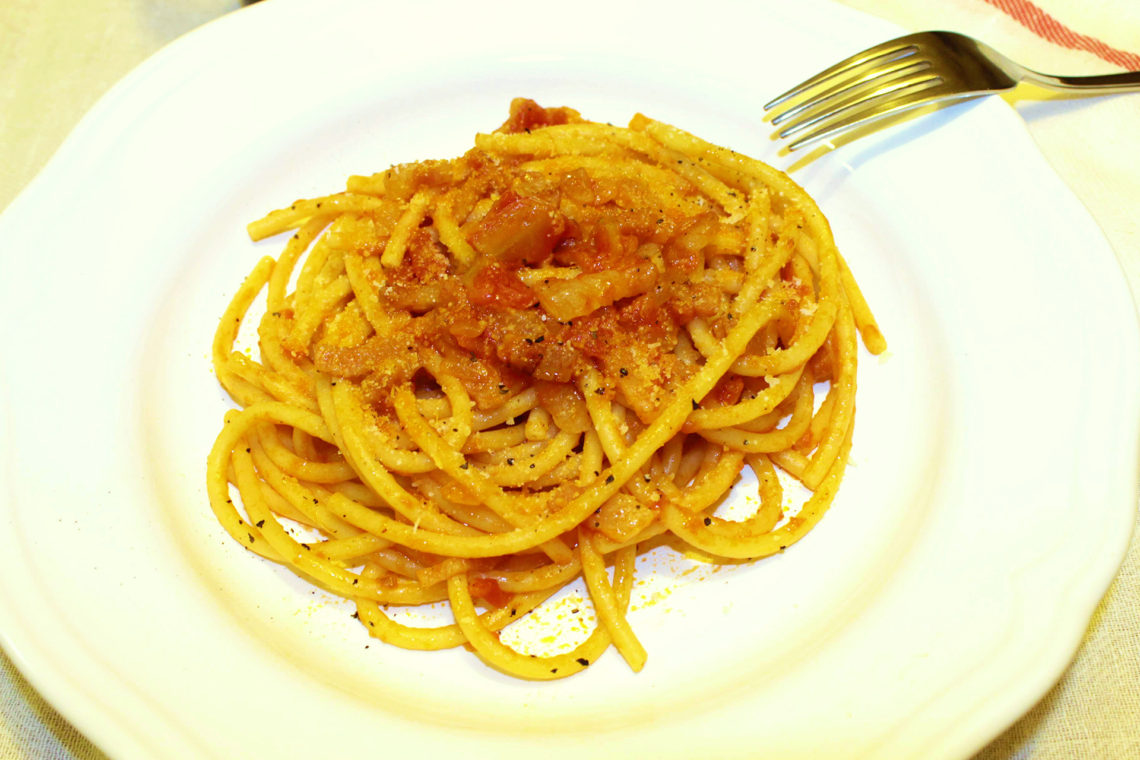
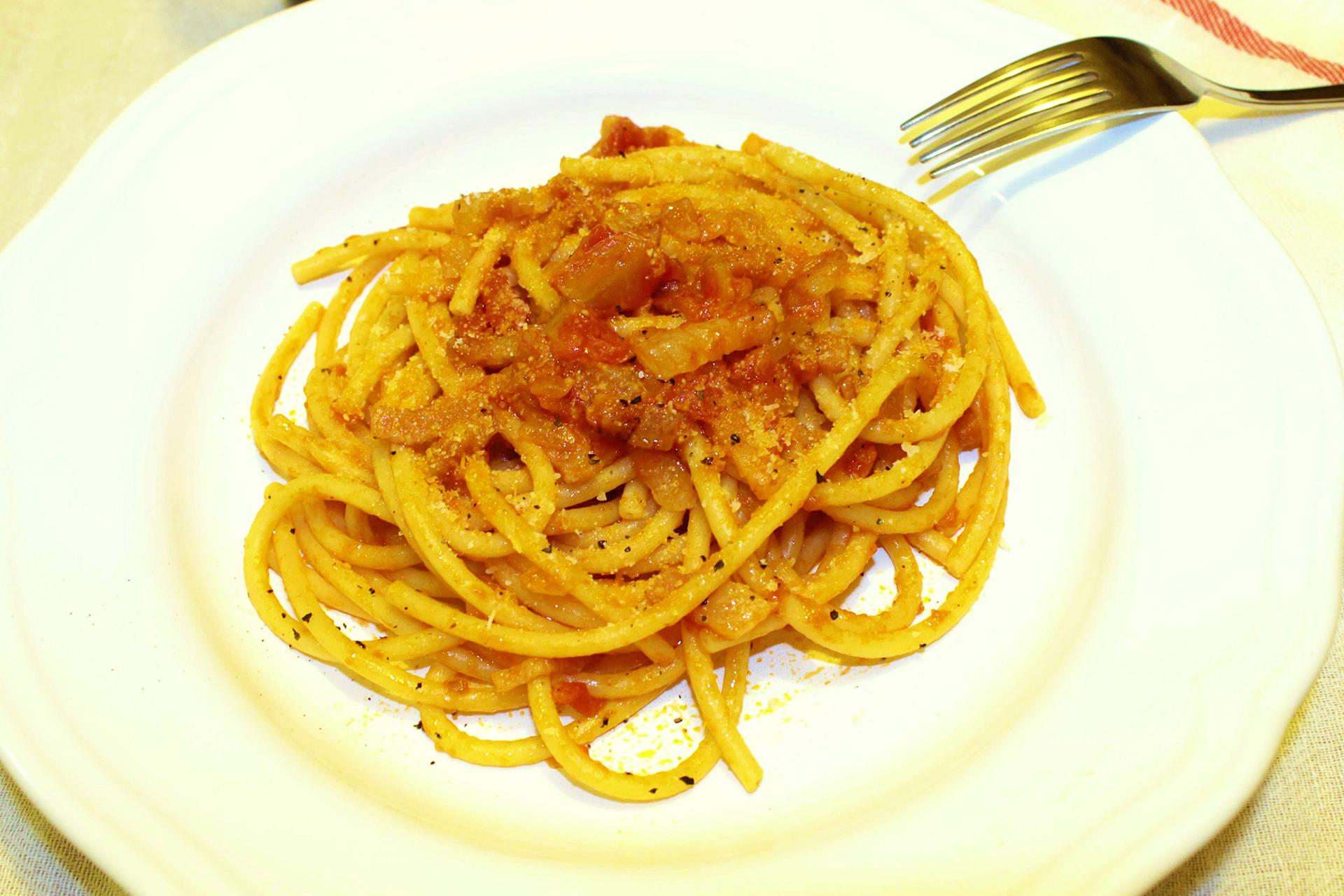

 (4 vote(s), average: 4.75 out of 5)
(4 vote(s), average: 4.75 out of 5)

